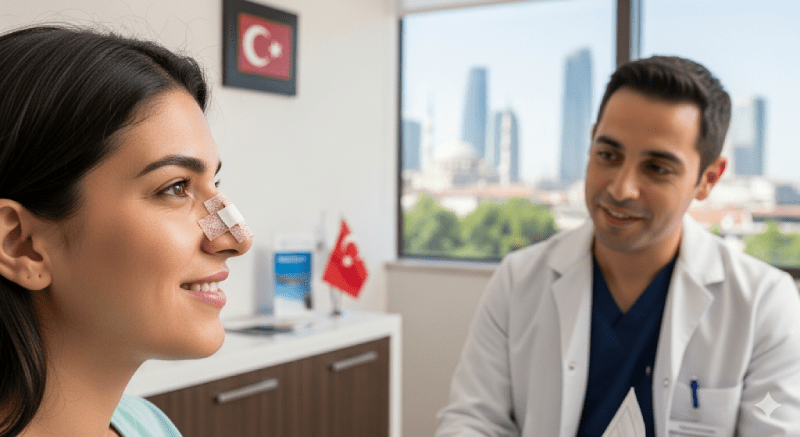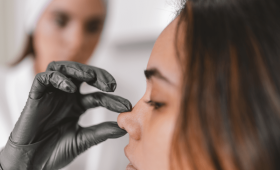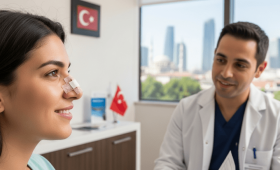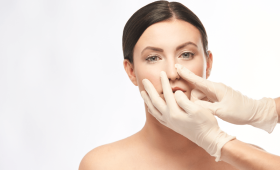Why is Turkey a Popular Center for Rhinoplasty?
Turkey has become a globally popular center for rhinoplasty. One of the most important reasons for this popularity is that it offers high-quality services at much more affordable costs compared to Western countries. Turkish aesthetic surgeons are extremely experienced and specialized in this field. Hospitals and clinics with modern technology attach great importance to hygiene standards. The government’s support for health tourism and its geographical location also make the country attractive to international patients.
What is the Average Cost of a Rhinoplasty in Turkey?
The cost of a rhinoplasty in Turkey varies greatly depending on the complexity of the surgery, the surgeon’s experience, the location of the hospital, and the technique used in the operation. On average, the cost of a rhinoplasty ranges between $2,500 and $6,000. These prices are well below the prices in many European countries. The price usually includes services such as the surgery, anesthesia, hospital stay, and post-operative check-ups.
What Are the Most Important Criteria for a Successful Rhinoplasty?
A successful rhinoplasty aims to achieve satisfactory results in both aesthetic and functional terms. Aesthetically, it is important that the surgery provides a nose that is harmonious, natural, and symmetrical with the facial features. Functionally, it is essential to eliminate the patient’s pre-operative breathing problems and preserve nasal functions. The success of the surgery is directly related to the surgeon’s experience, the selection of the right technique, and the patient’s realistic expectations.
How to Choose the Right Surgeon in Turkey?
Choosing the right surgeon in Turkey is one of the most critical steps for the success of the surgery. Research the surgeon’s expertise and experience in the field of rhinoplasty. Check hospitals with international accreditations (like JCI) and review the comments and before/after photos of the surgeon’s previous patients. The way the surgeon communicates with you and how detailed they are in answering your questions are also important in the decision-making process.
Who is the Most Suitable Candidate for a Rhinoplasty?
The most suitable candidates for a rhinoplasty are individuals who have completed physical nasal development (usually over 18 years old), are in good general health, and have realistic expectations about the surgical results. This operation is suitable not only for those with aesthetic concerns but also for those with functional problems such as difficulty breathing. A detailed examination by a specialist is essential before deciding on the surgery.
How Does the Pre-Operative Consultation Process Work?
The pre-operative consultation process is the most important stage of communication between the patient and the surgeon. In this process, the patient explains their expectations and desires in detail. The surgeon analyzes the patient’s nasal structure, facial features, and skin type to create the most suitable surgical plan. Computer simulations or 3D modeling techniques can be used to show the patient the potential post-operative appearance. This process ensures the patient has the right expectations.
What is the Difference Between Open and Closed Rhinoplasty?
The two most common techniques used in rhinoplasty are open and closed rhinoplasty. In open rhinoplasty, a small incision is made at the tip of the nose, and the nasal skin is lifted to make the nasal bone and cartilage structure fully visible. This technique provides the surgeon with better visibility and control. In closed rhinoplasty, all incisions are made inside the nostrils, and no external incision marks are visible. The surgeon decides on the most suitable technique based on the complexity of the surgery.
How Long Does a Rhinoplasty Take?
The duration of a rhinoplasty varies depending on the complexity of the operation and the technique used. A simple surgery can take 1.5 hours, while more complex or revision surgeries can take 3-4 hours or longer. The operation is performed under general anesthesia, and the patient does not feel any pain or discomfort during this time. Your surgeon will inform you of the estimated duration during the pre-operative consultation.
What is the Pain and Recovery Process Like After Surgery?
The pain felt after a rhinoplasty is generally mild and can be easily controlled with prescribed pain relievers. Swelling, bruising, and a feeling of discomfort around the nose and face are normal for the first few days. A large part of the swelling subsides within the first 2 weeks, but full recovery and the final shape settling can take 6 months to 1 year. It is very important to follow the doctor’s instructions during the recovery process.
What is Revision Rhinoplasty and Why Might It Be Necessary?
Revision rhinoplasty is when patients who have previously undergone a rhinoplasty have a second operation. This may be necessary for reasons such as dissatisfaction with the result of the first surgery, the persistence of aesthetic flaws, or the unresolved nature of breathing problems. Revision surgeries are generally more complex and difficult than the first surgeries because the nasal tissue has already been surgically altered.
How Should Post-Operative Nose Care Be Performed?
Post-operative nose care is of vital importance for a successful recovery. You should clean the inside of your nose with saline sprays as recommended by your doctor and gently clean the nostrils after the nasal splints are removed. For the first few weeks, the nose should be protected from impacts, heavy exercise should be avoided, and contact lenses should be used instead of glasses. Keeping your head elevated while sleeping will help reduce swelling.
How Experienced Are Rhinoplasty Doctors in Turkey?
Rhinoplasty doctors in Turkey perform thousands of operations annually due to the effect of health tourism. This high case volume has allowed surgeons to gain extensive experience with different nose types and complex situations. Many Turkish surgeons have received reputable international training and have published scientific papers in this field. The surgeon’s experience is one of the most important factors directly affecting the outcome of the surgery.
When Is It Safe to Fly After a Rhinoplasty?
Flying after a rhinoplasty is generally safe 7 to 10 days after the surgery. This period is necessary for the initial days when swelling and bruising are at their peak to pass and for the patient’s general health condition to stabilize. You should get approval from your doctor before flying and be prepared for possible pressure changes during the flight.
How Long Do Swelling and Bruising Last?
Swelling and bruising after a rhinoplasty are a natural result of the surgery and vary from person to person. Bruising usually disappears to a great extent within the first 1-2 weeks. Swelling, on the other hand, can last longer. While major swelling subsides within 2-3 months, the fine swelling on the nasal tip can take 6 months to 1 year to completely disappear. Using the medications prescribed by your doctor and applying cold compresses will speed up this process.
When Can I Return to Normal Life After Surgery?
The process of returning to normal life after surgery depends on the person’s recovery speed and their job. Most patients can return to work or school one week after the surgery. However, it is important to avoid physically strenuous work and sports activities during this period. A return to a normal exercise routine is usually possible after 4-6 weeks. Adhering to the doctor’s recommendations is necessary for a full return to social activities.
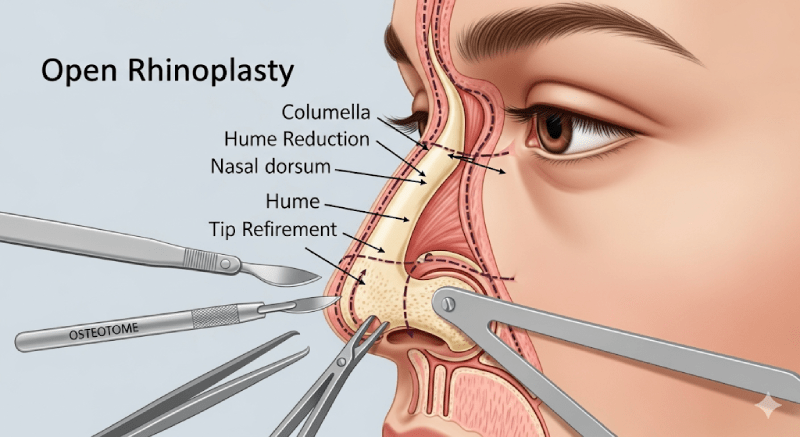
What Are the Possible Risks and Side Effects of a Rhinoplasty?
As with any surgical operation, a rhinoplasty has some risks and side effects. These can include complications such as infection, bleeding, anesthesia-related issues, nasal congestion, loss of sensation, or asymmetry. These risks are minimized when the surgery is performed by an experienced surgeon in a modern and sterile environment. Your surgeon will explain all the risks to you in detail before the surgery.
When Will the Final Result Become Clear?
The final result of a rhinoplasty becomes clear when the nasal structure is fully settled and the swelling has completely subsided. This process can take up to 1 year. The nose may appear swollen and edematous in the first few weeks, which is a natural process. It is important to be patient to see the final result and to strictly follow your doctor’s recommendations. The nose will have taken its final shape after 1 year.
When Are the Stitches and Cast Removed?
The stitches used in a rhinoplasty are generally absorbable and disappear on their own. The cast or thermal splint placed on the nose after surgery is used to protect the nasal structure and reduce swelling. This cast is usually removed during the first check-up by the doctor, 7 to 10 days after the surgery.
How Long Do I Need to Stay in Turkey for the Surgery?
For international patients coming to Turkey for a rhinoplasty, a stay of 7 to 10 days is generally recommended. This period covers the entire process, including the surgery, hospital stay, first post-operative check-ups, and the removal of the cast or splints. It is important to be in Turkey during this time to monitor the healing process and have one-on-one communication with your doctor.
Does a Rhinoplasty Change My Facial Expression?
A successful rhinoplasty should be designed to be in harmony with the other features of the face and should not negatively change the facial expression. On the contrary, it enhances the overall symmetry and aesthetic balance of the face, leading to a more pleasant expression. The surgeon aims for the most natural result by considering the patient’s facial proportions during the surgical planning.
Can Breathing Problems Be Corrected After a Rhinoplasty?
Yes, a rhinoplasty aims to solve both aesthetic and functional problems. Problems that cause breathing difficulties, such as a deviated septum (nasal bone deviation), can be corrected simultaneously during the surgery. This allows the patient to have both an aesthetically pleasing nose and easier breathing. Therefore, the surgery can provide great relief for patients with functional problems.
Can I Come Alone for the Surgery?
Yes, you can come to Turkey alone for a rhinoplasty. Many clinics offer special services for international patients. These services include airport transfers, accommodation arrangements, and a translator or patient coordinator to accompany you throughout the treatment process. These services aim to make your travel and treatment process easier and more comfortable.
How Is the Use of Contact Lenses or Glasses Affected After Surgery?
It is recommended not to use glasses for the first few weeks after the surgery. The weight of the glasses can negatively affect the new position of the nasal bones and increase swelling. Therefore, it is recommended to use contact lenses or postpone the use of glasses for a while. Your doctor will give you a clear indication of when you can start using glasses again.
How Are the Cartilage and Bone Structures Shaped?
In a rhinoplasty, the cartilage and bone structures are reshaped using special tools to change the shape of the nose. The surgeon can reduce the nasal hump, lift the nasal tip, or narrow the nostrils. These tissues, which form the basis of the nasal structure, are supported and stabilized to ensure permanence in their new shapes after the surgery.
How Is a Nose That Is in Harmony with the Entire Face Designed?
Designing a nose that is in harmony with the entire face is the key to a successful aesthetic result. During rhinoplasty planning, surgeons analyze the patient’s facial proportions, forehead, chin, lip, and eye structures in detail. The nose should be in a natural balance with the rest of the face and should provide a more aesthetic appearance without changing the person’s identity.
What Can Be Done to Reduce Bruising After a Rhinoplasty?
Several methods can be used to reduce bruising and swelling after a rhinoplasty. Applying a cold compress for the first 48 hours after the surgery, keeping your head elevated, getting enough sleep, and drinking plenty of water will be beneficial. Additionally, regularly taking the medications prescribed by your doctor and limiting salt consumption also speed up the recovery process.
What Should Be Considered Before the Surgery?
Before a rhinoplasty, it is important to strictly follow your surgeon’s instructions. It is recommended that you stop smoking and drinking alcohol at least one week before the surgery. Blood-thinning medications (like aspirin) and herbal supplements should be avoided. On the day of the surgery, you should not wear makeup and should wear comfortable clothes. You should inform your surgeon about all your medical information and medications you use before the surgery.
Does a Rhinoplasty Permanently Change Facial Expression?
A successful rhinoplasty should not negatively change facial expression; on the contrary, it should make it more prominent and attractive. The surgeon’s goal is to arrange the nose shape to be in harmony with the other features of the face. A permanent change provides an aesthetic harmony without spoiling the overall expression of the face.
What Activities Should Be Avoided During the Full Recovery Process?
During the full recovery process, especially in the first few weeks, activities that could damage the nasal structure should be avoided. Heavy exercise, swimming, going to the sauna, and direct sun exposure are not recommended. Contact sports (like basketball, football) and all activities that carry the risk of getting a blow to the nose should be avoided for at least 6 months.
Is Psychological Support Needed After a Rhinoplasty?
The post-operative process can be physically and psychologically challenging. The swelling and bruising in the first few days can prevent the patient from feeling good about themselves. Getting psychological support during this process can help the patient adapt to their new appearance. Realistic expectations and a positive outlook ease the recovery process.
How Does the Nasal Tip Feel After Surgery?
It is normal to have numbness or a loss of sensation in the nasal tip after a rhinoplasty. This occurs because the nerves can be affected during the surgery. Over time, this numbness decreases, and the nasal tip regains its sensation. This process varies from person to person but usually takes a few weeks or months.
Which Age Groups Are Suitable for Rhinoplasty?
The most suitable age for a rhinoplasty is 18 and older, when nasal development is complete. At this age, the nasal bone and cartilage structure are fixed, which ensures that the surgical results are more permanent. For patients in advanced age, the decision for the operation is made after evaluating factors such as general health condition and skin elasticity.
What Type of Anesthesia is Used in the Surgery?
Rhinoplasty is generally performed under general anesthesia. This ensures that the patient is completely asleep during the surgery and does not feel any pain or discomfort. Depending on the complexity of the surgery, local anesthesia may also be preferred, but general anesthesia is more common and comfortable. The anesthesiologist decides on the most suitable type of anesthesia after evaluating the patient’s general health condition.
What Services Are Included in the Rhinoplasty Price?
Rhinoplasty prices in Turkey generally cover basic services such as the surgery, anesthesia, hospital stay, medications, post-operative dressings, and check-ups. Some clinics may offer more comprehensive packages that also include airport transfers and hotel accommodation. It is important to contact the clinic or your surgeon in advance to learn about the pricing details.
